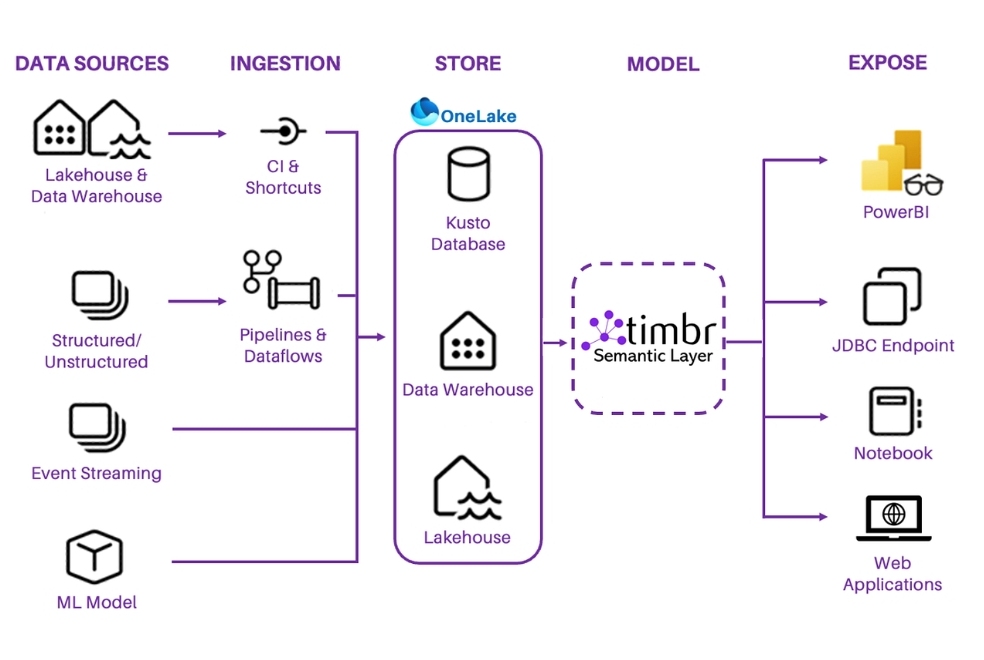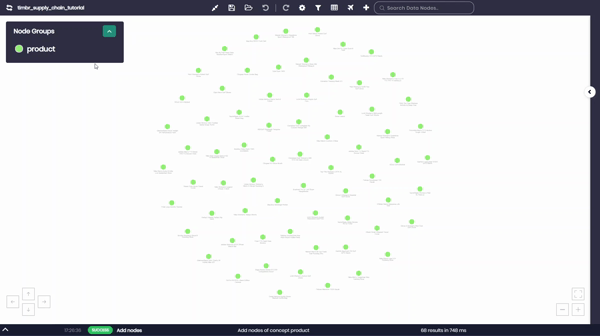reference architecture
OneLake and Timbr:
Transforming Data Lakes into Semantic Powerhouses
OneLake provides a unified foundation for structured, unstructured, and real-time data storage and processing.
By integrating Timbr, enterprises can transform their OneLake environments into cohesive, semantic ecosystems that simplify data complexity and enable faster decision-making.
Why Timbr with OneLake?
Timbr transforms OneLake from a powerful storage platform into a semantic ecosystem. Together, they provide a scalable, insightful, and efficient framework for managing and analyzing data.
How Timbr Embeds into OneLake
Timbr integrates into OneLake’s modeling layer, enhancing the architecture by:
- Unified Semantic Graph: Timbr creates a connected semantic graph across OneLake’s data warehouse, Kusto databases, and lakehouse storage, enabling seamless exploration of relationships.
- Semantic Relationships: Replace complex SQL JOINs with intuitive relationships, simplifying querying and exploration across datasets.
- Cross-Platform Accessibility: Timbr exposes semantic models and metrics to downstream tools like Power BI, notebooks, and web applications for consistent analytics.
Features in Action
- Ontology Modeling: Define and manage relationships within OneLake’s storage ecosystem to create a unified and reusable semantic structure.
- Metrics Autodiscovery: Discover and standardize key business metrics from existing data patterns, enabling consistent analysis across all tools.
- Seamless Tool Integration: Expose Timbr’s semantic models to popular tools through JDBC endpoints or native integrations.
Impact
By embedding Timbr into OneLake, enterprises can:
- Accelerate Data Insights: Access unified, meaningful data insights faster using semantic relationships and intuitive querying.
- Enhance Collaboration: Provide teams with a consistent semantic understanding of data, improving cross-functional alignment.
- Simplify Complexity: Eliminate redundant data modeling efforts with a centralized semantic graph that scales with organizational needs.



